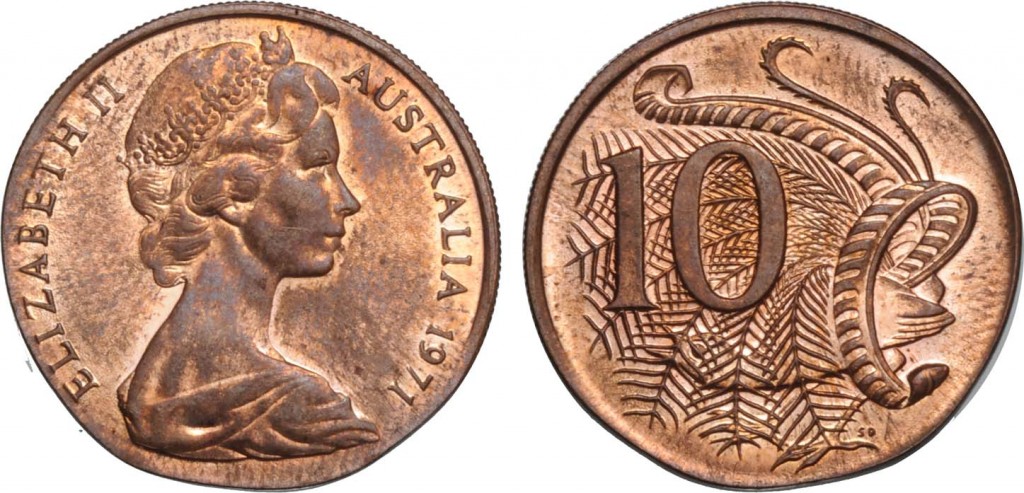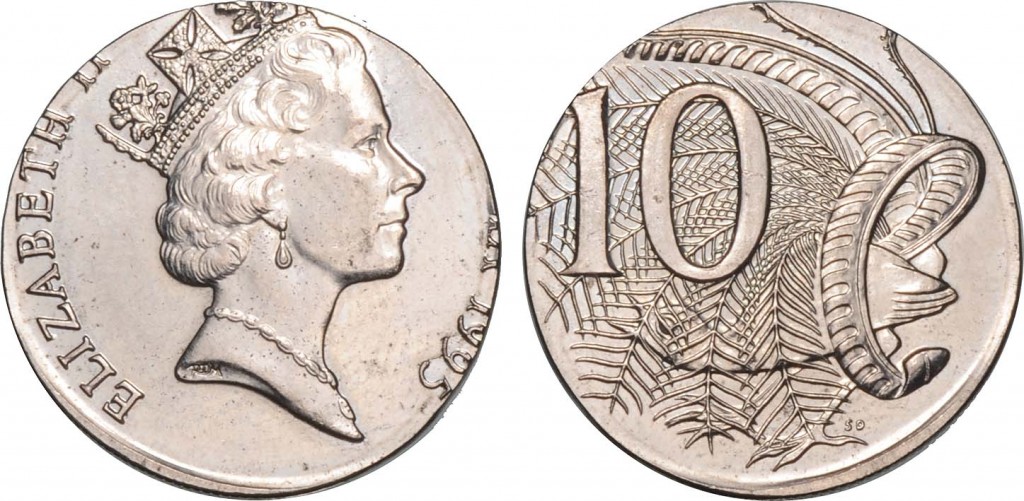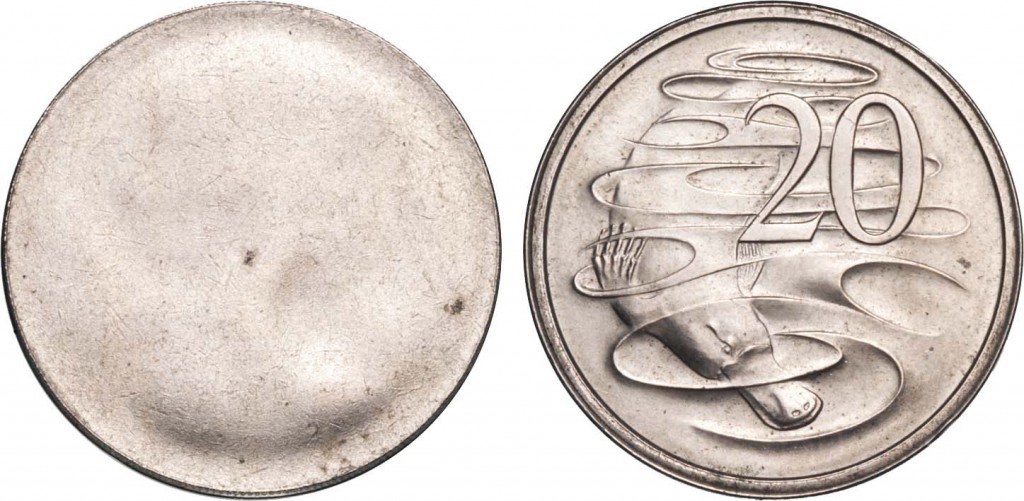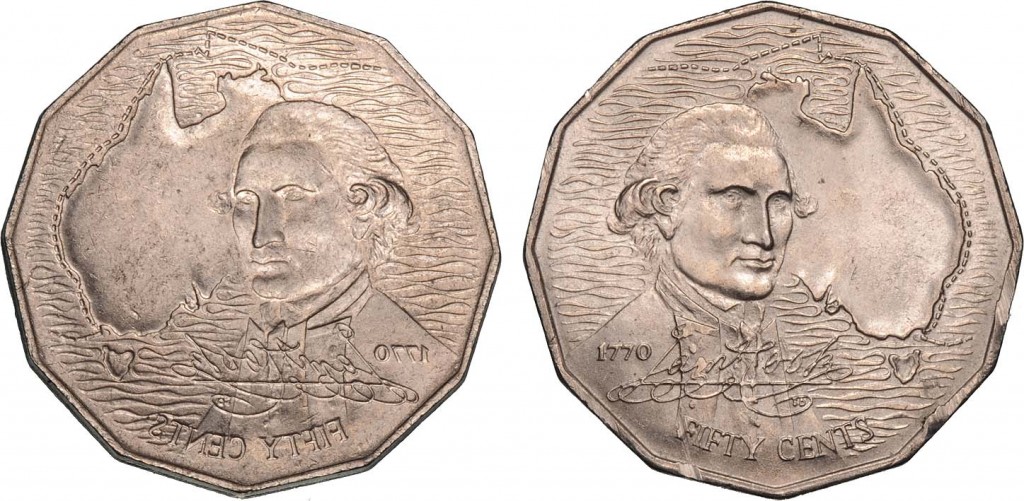Downies held auction #319 last week (27-28 May 2015) and it included a number of interesting error coins that we though we’d share with you here. Note that realised prices are net of buyers commission of 19.25%.

1971 10c Struck on Bronze 2c Planchet (Image courtesy Downies Australian Coin Auctions)
First up is a 1971 10 cent struck on a bronze 2c planchet. Wrong planchet errors are among the most desirable decimal errors, but this one being the wrong planchet and off metal makes even more drool-worthy. Graded by Downies as gEF and with much remaining mint red (albeit with fingerprints) the coin realised $2500 (plus commission) on an estimate of $1,250.

1995 10c Struck on 5c Planchet (Image courtesy Downies Australian Coin Auctions)
The second coin we’re looking at is a 1995 10 cent struck on a 5 cent planchet. We’ve seen a few 10c on 5c planchets before but this is the first one we can recall with the Maklouf portrait of QE2, the others we’ve seen are earlier dates with the Machin portrait. The coin was described as virtually UNC, estimated at $1,500 and realised $2000.

Machin Portrait 20c Reverse Brockage (Image courtesy Downies Australian Coin Auctions)
Next up is an interesting 20 cent. Described by the catalogue as:
Twenty Cents undated Machin portrait (11.36gms) the reverse partially struck outside collar resulting in missing milling and raised lip, the obverse with foreign material obstruction causing the virtual disappearance of the obverse portrait and no legend, aUnc or better with very little wear and most interesting.
It’s almost certainly a late state brockage and the partial collar strike further supports this. The blank was unable to engage fully with the collar due to the die cap. It was estimated at $1,500 and fetched $2,600. An interesting error, brockages of any decimal coins are rare indeed.

1970 Captain Cook 50c Reverse Brockage (Image courtesy Downies Australian Coin Auctions)
Last coin we’ll look at is another brockage. This one far more spectacular. A full, early state reverse brockage of a 1970 Captain Cook 50 cent. It’s fully struck up but with some unfortunate scrape marks, probably made by press operators removing it with a tool because it jammed the coin press. Graded as AU it’s a spectacular and truly rare error. It was estimated at $3,500 and ended up selling for $6,200 (plus commission). That might seem like a high price but it’s probably going to appear something of a bargain in 10 or 20 years time.
There you have it, four interesting decimal errors that sold recently, giving an indication of the current strength in the decimal error market.

